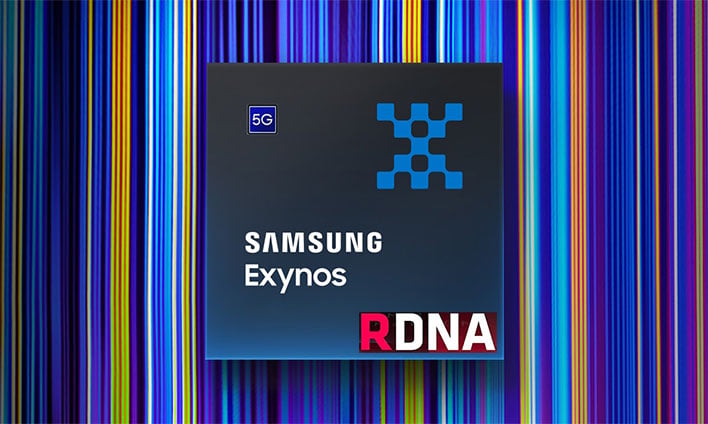Samsung Exynos 2200 SoC With AMD RDNA GPU Tipped For Smartphone And Laptop Duty

While the Exynos 2200 was previously expected to debut during Q2 2021, a new report from The Korea Economic Daily alleges that the chip will instead arrive in the second half of 2021. Not only will the Exynos 2200 be used in Galaxy smartphones and tablets as was previously expected, the report goes on to indicate that it will find its way into Windows 10-powered laptops.
The Exynos 2200 would not be the first Arm processor to power Windows 10 devices, as Qualcomm Snapdragon 8cx-based devices are currently available from Microsoft, Lenovo, and even Samsung. However, this is the first time one of Microsoft's OEM partners would field its own homegrown SoC.
"The new Exynos will offer improved functions, including extraordinary computing power and battery efficiency, by utilizing a 5-nanometer processing technology. It's good for both laptops and smartphones," said an industry source that spoke with KED.
Apple rocked the computing landscape when it introduced its custom M1 SoC late last year. Despite its underlying power-efficient Arm architecture, the M1 offers comparable performance to high-end x86-64 processors. Apple initially launched the M1 with the 13-inch MacBook Pro, MacBook Air, and Mac mini. It later stuffed the SoC into the all-new iMac and the iPad Pro. Many were surprised to see the PC-class M1 land in the iPad Pro, but Apple is looking to spread the goods far and wide.
Samsung apparently has the same idea in mind with the Exynos 2200 using the Apple model of developing an in-house Arm chip to replace more traditional AMD and Intel processors in the computing realm. One curious thing, however, is how Samsung will scale performance for two wildly different platforms.
Given its smaller form-factor, an Exynos 2200 performance optimized for a Windows 10 laptop would likely be too power-hungry for a Galaxy smartphone with a much smaller battery. Apple can get away with this with the M1 in the iPad Pro due to its much larger battery and greater internal space for heat dissipation than an iPhone. But Samsung will likely adjust clock speeds and CPU/GPU core counts to reach lower power targets in the smartphone form-factor.

